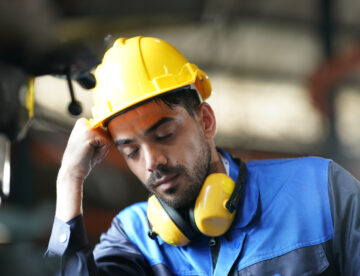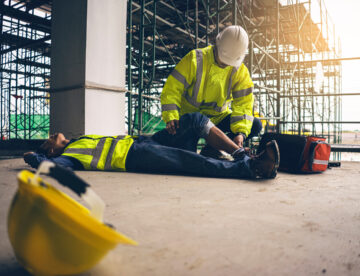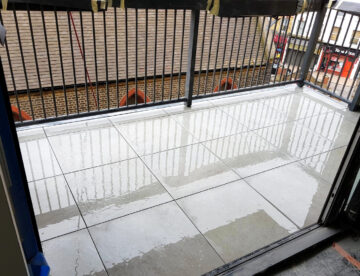
As the clock go back by one hour this coming weekend, some people may be relishing in the idea of an extra hour’s sleep. For construction workers, however, the shortening of daylight hours comes with the challenge of spending at least part of their day working and/or commuting in the dark.
In this week’s blog, we’ll explore how this time of year affects construction workers, the dangers of fatigue and how to stay safe when working or travelling in the dark.

Cuts and lacerations are among the most common injuries on construction sites, often caused by sharp tools, machinery and materials. While some injuries may be minor, others can be serious – requiring medical attention and sometimes leading to lost workdays, permanent disability or even fatalities.
Understanding the causes, prevention strategies and appropriate responses is crucial to ensuring the safety of all workers. Read on to learn more in our latest ‘Focus on Safety’ blog.

Modern flat roofing systems, when installed by professionals, are designed to require minimal upkeep. However, that doesn’t mean ‘no maintenance’ and most in the roofing business recommend a twice-yearly routine maintenance check.
So, as we face the usual influx of leaves, debris and unpredictable weather that come with Autumn, this week’s blog will guide you through some key steps to keep your roof in top shape.

The afternoon slump, a dip in energy that usually occurs between 1.00 – 3.00pm, is a common experience for many workers. Whether you’re swinging a hammer on a construction site or crunching numbers in an office, the ‘slump’ can significantly impact your productivity.
However, by implementing a few simple strategies, you can effectively combat this mid-day lull and maintain a high level of focus throughout the entire day. Take a look at this week’s blog for more.

Slips, trips, and falls are among the most common causes of injuries in the construction industry in the UK. These accidents often lead to serious and/ or permanent injuries and even fatalities.
Understanding the causes, implementing effective prevention strategies and knowing how to respond when an accident does occur is crucial for ensuring the safety of all construction workers. Find out more about this critical issue in this week’s ‘Focus on Safety’ blog.

The Home Builders Federation (HBF) has recently announced the launch of a fifth round of its successful Women into Home Building programme, designed to attract more women into site management roles within the construction industry.
Partnering with ten leading homebuilders, the programme offers over 30 training opportunities, support services and work placements to aspiring female site managers. Find out more in this week’s blog.

A fire that ripped through a residential project in East London this June led to one construction worker having to be rescued from the end of a tower crane and seven people being hospitalised due to smoke inhalation.
The fire was just one of hundreds that occur on construction sites each year across the UK, potentially putting the lives of workers and members of the public at risk. Make sure this doesn’t happen at your site by reading our latest blog.

After a short summer break from blogging, we are back in the room and thought what better subject to resume with than another shout out to our wonderful suppliers.
In the last of this series (for the time being), we’re giving recognition to another two companies that have been consistently supporting us at Sheriff Construction and our sister companies. Read on to find out more.

A couple of weeks ago, we shared the first of our ‘Shout out to our suppliers’ blog series, in which we are recognising some of the brilliant suppliers who have been supporting Sheriff over the years.
While our first blog focussed on roofing and safety systems, today we’re turning our attention to two suppliers who, between them, are providing us with most of our masonry requirements. Keep reading to find out who they are.

Arriving on the construction scene as a small gang of builders back in 2005, we have grown into a much larger enterprise that now comprises of two construction companies (Sheriff Construction and Sheriff Brickworks) plus two property development companies.
We could not have managed this level of growth without the fantastic suppliers that have supported us along the way, often for many years. So, we thought it was about time we used our blog to shine the spotlight on some of them. Read on for part 1 of this ‘shout out to our suppliers’ series.
